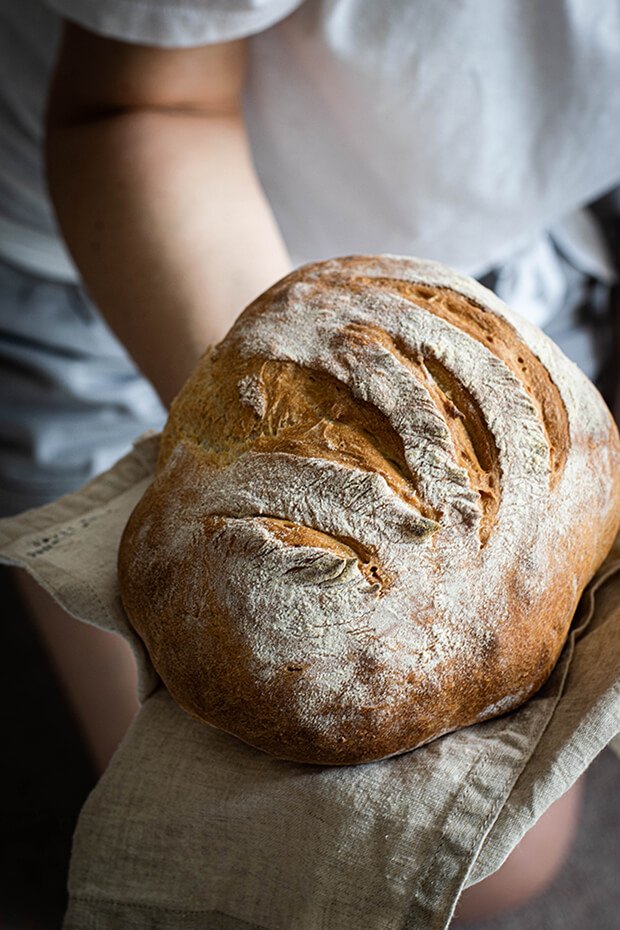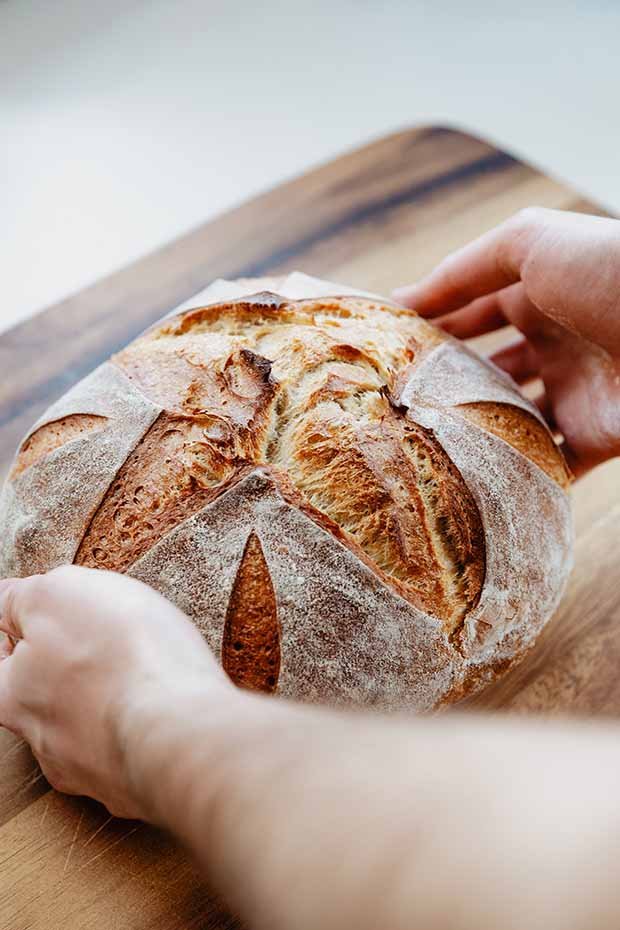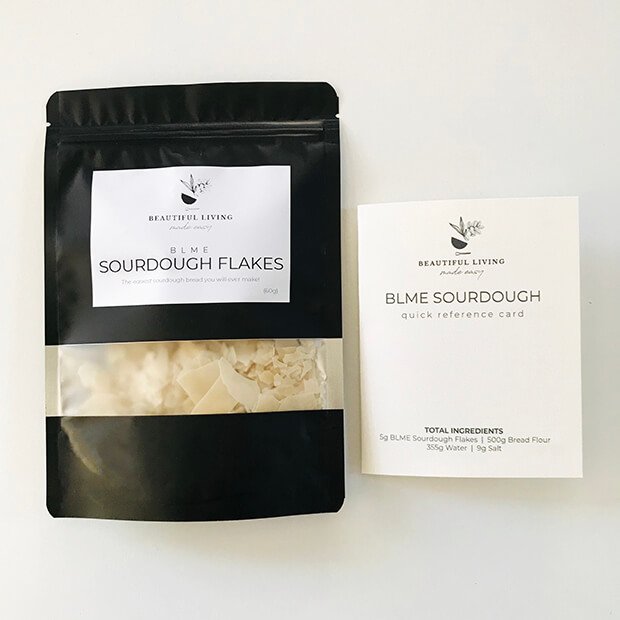Traditional care, Low-maintenance or Pantry Sourdough Starter?
What are they?
Which one is right for you?
My speciality is easy sourdough. Simple hacks that reduce the pitfalls and learning curves associated with making your own sourdough bread at home. It’s the only process I use across this site and products.
Easy means:
- No kneading
- No bakers yeast
- No special equipment
- No courses
- No experience
- Your choice of never to daily feeding of your sourdough starter (That’s what this post will help you answer)
No matter which one you choose: Traditional Sourdough Starter, Low-maintenance Sourdough Starter or Pantry Sourdough Starter, the process is the same design, our recipe makes all sourdough work easily.
I need to ask you a question:
How easy do you want sourdough to be?

I made sourdough bread the traditional way for more than a decade and, a sucker for convenience, I continually found ways to make it easier!
Inspired by hearing far too many people say they couldn’t make their own sourdough bread, I spent 2 years creating a process that overcomes the most common issues and simplifies the basics. This process is the easiest way I know to make the same authentic sourdough bread that I’ve made for years, without the pitfalls.
I wanted you to be able to make your own artisan sourdough bread at home easily. And be proud of it.
Once you add flour and water, sourdough becomes a living organism that needs care at particular stages. It relies on time, temperature, humidity, flour type, flour freshness, proteins in the flour, wild yeasts in the air etc… and the baker’s experience. Your touch, technique, and knowledge all make a difference. Sourdough is like having a pet – you get to know what it needs, when it needs it and respond.
With so many variables, turning out a flat loaf of sourdough bread is completely normal. ALL sourdough bakers have had flat loaves. What’s also normal is the google search that follows and the subsequent learning curve that is the wonderful world of sourdough. This was my story, which is why I am passionate about making it work for you.
Taking all the common pain points and replacing them with easy-to-do hacks, this age-old method has been reimagined, to help you produce the same loaf of sourdough without the fuss and disappointment. You don’t need to know all the signs and wonders, our unique approach is built to educate you, easily, as you make your very first loaf or two!
My aim is that you (hopefully!) never again produce a flat loaf of sourdough bread.
I hope you find making your own sourdough bread to be so easy, that you fall in love with making it. 🖤
Traditional, Low-Maintenance or Pantry Sourdough Starter?
Ok, so what’s the difference between them?
All three methods use the same ingredients and sourdough process. No matter which one you choose – you will find it is the same easy way.
Though I call one process ‘Traditional’ it is not entirely traditional! But filled with effort-saving, pitfall-avoiding hacks to make making your own sourdough bread at home ~ easy. Traditional refers to the way you feed and store your sourdough starter.
The difference between the three is the way you grow and care for your sourdough starter.
Traditional Sourdough Starter = Daily feeding
Low-maintenance Sourdough Starter = Feed every month or whenever you bake
Pantry Sourdough Starter = No care at all (grow only when you bake).
| Care process | Use… | Stored… | Feeding |
| Traditional | Your own OR Grow your own Sourdough Starter bought from our store and grown by you | On your kitchen bench | Daily |
| Low-Maintenance | Your own OR Grow your own Sourdough Starter bought from our store and grown by you. | In your refrigerator | When you bake sourdough bread OR every month |
| Pantry Sourdough Starter | Pantry Sourdough Starter | In your pantry | Only to grow for baking |
Consider how much time you want to commit to the sourdough process. It’s up to you and I will teach you how within each recipe. Your bread will be the same.
Other differences
There are two other differences between the three options for making sourdough and they are worth thinking about when it comes to deciding which process is right for you
They are:
1. Turn around time
2. Waste
Here’s a quick overview:
| Care Process | Turn-around time for a loaf^ | PROS & CONS |
| Traditional Sourdough Starter | 20 hours* | Pro: You can make dough straight away Cons: Feed every day, constant discard |
| Low-Maintenance | 23 hours* | Pros: Minimum feed = every month, no discard Con: It needs to be fed before baking, plan ahead slightly |
| Pantry Sourdough Starter | 48 hours* | Pros: You don’t have to feed it ever (unless baking), no discard (ever!) and you can travel with it! Con: It needs to be fed before baking, plan ahead a bit more. |
^Using our foolproof, no-knead process
*Time depends on temperature. Minimum time stated
TURN AROUND TIME
How you store your sourdough starter affects how quickly it’s ready to make bread. It also affects how often you need to feed your starter.
When you keep your sourdough starter on your kitchen bench (Traditional), it’s always active, ready to rise bread (after a good feed and doubling!). Stored in the fridge (a low-maintenance way of caring for it) sourdough starter hibernates, and when you keep it on your pantry shelf (Pantry Sourdough Starter) your sourdough starter is dormant.
Hibernating and dormant sourdough starter need waking up, taking 2 and 3 feeds respectively.

WASTE
How you store your sourdough starter affects how often you need to feed it affecting how much discard (waste) you create.
The overall mass of your sourdough starter triples with each feed. Hence the need to ‘discard’ (unless you bake) in order to keep your sourdough starter small and waste to a minimum.
Traditional sourdough is the highest-maintenance. Our version of the bread is made easy by no-kneading and other hacks but the sourdough starter requires constant feeding and care. The more you feed it, the more you need waste is created, known as sourdough discard.
What is sourdough discard?
Discard is the amount of sourdough starter that you remove before feeding, and therefore is discarded. Generally, it’s 2/3 of your sourdough starter, leaving you with 1/3 to feed. Sourdough starter is fed its own weight in both water and bread flour, which returns your sourdough starter to the same size as it was prior to ‘discarding’.
E.G If you have 45g of sourdough starter to feed, remove 2/3 (30g). Feed the remaining 15g equal to it’s own weight in both water and bread flour, so: 15g water & 15g bread flour. It is now 45g again. Allow it to double.
Next feed, remove 2/3 (30g) again which leaves you with 15g to feed. Repeat. This keeps your sourdough starter, and feed amounts small. You ‘waste’ 30g each feed to save yourself a whole lot more waste if you keep it and not discard.
What happens if you don’t discard sourdough starter before each feed?
Using the same example of starting with 45g of starter, you need to feed it its own weight in both water and flour. So: 45g water and 45g bread flour. You now have 135g of sourdough starter. After doubling, and without discarding, the next feed your starter will need its own weight in water and bread flour again. So, 135g water and 135g bread flour. You will then have 405g of sourdough starter. The mass growth is exponential.
Keeping your sourdough starter small, keeps the feed amounts small as well.
Sourdough discard isn’t really waste when you use it in non-bread recipes such as sourdough pancakes. You can collect it, store it in the fridge and use to make any sourdough discard recipe. Sourdough discard recipes use the discard for the complexity of flavour and not the sourdough starter’s rising power.
By changing the way you store your sourdough starter, you can create less maintenance and thus, less-waste.
Our Grow Your Own Sourdough Starter and Pantry Sourdough Starter kits are both a zero-waste process. There is no discard.
Another bonus for zero waste, all our no-knead bread recipes (including Traditional) uses exactly 500g of flour from starter to the final loaf. 500g divides evenly into any kilogram packet no matter how many (kg) you buy. ☺️ This may be different if you live overseas, but here in Australia, the fit is perfect!
MJ! You’ve changed my life! You’ve made me into a sourdough bread baker. I can’t even believe it. After five attempts using various famous bakers’ recipes and never getting it even close to right. Everyone must know!!! So grateful. ~ Kate
So.. How to choose the sourdough process that’s right for you?
TRADITIONAL SOURDOUGH
✔️ You already have a sourdough starter that you trust OR you’re going to buy one to get yourself going
✔️ You don’t mind feeding it every day
✔️ You bake something with sourdough every few days
Your steps for successful sourdough:
Follow our Easy no-knead sourdough bread recipe. This won’t change how you care for your sourdough starter but will help you make sourdough bread the easy way and get a fabulous outcome!
If you have a sourdough starter but don’t know how to feed it, this post will help you out: How to feed a sourdough starter
If you don’t have a sourdough starter, you can purchase our Grow Your Own Sourdough Starter, get it going in under 3 days and continue to feed it daily if that’s your heart’s desire!
LOW-MAINTENANCE
✔️ You already have a sourdough starter that you trust OR you’re going to buy one to get yourself going
✔️ You don’t mind feeding it once every month or when baking
✔️ You bake something with sourdough up to twice a week (can be much less)
Your steps to successful sourdough:
Use your starter or buy one
Follow our easy Sourdough Bread Recipe ~ Low-maintenance, it has the Low-Maintenance feeding built-in.
PANTRY SOURDOUGH STARTER
✔️ You’d like to try making sourdough for yourself or with children as a special activity (not build it into your lifestyle… just yet!)
✔️ You bake sourdough once a week or less. Perhaps months apart
✔️ You’d like to be able to bake sourdough bread on holidays (travel)
✔️ You’d like to have a sourdough starter on hand for a special occasion with zero upkeep
Your steps to successful sourdough:
Purchase Pantry Sourdough Starter to store in your pantry
And then follow our easy Pantry Sourdough Starter ~ Bread Recipe
ALL
✔️ You want to make sourdough bread the easy way without many of the common pitfalls
✔️ You’re a beginner, hobbyist, busy, lazy, having trouble with sourdough, curious, parent, grandparent, professional, student… just you, whoever you are. This is sourdough you can make easily… that works. And it’s FREE (except for my starter) Just follow the process that’s right for you using the No-Knead Sourdough menu at the top.
Whichever process is right for you, the outcome is authentic sourdough bread, it’s just been made easy. 🙌
Let me know what you chose, how you went and if you have questions… fire away! This is sourdough bread anyone can make and be proud of it!

What are the Grow Your Own Sourdough Starter and Pantry Sourdough Starter kits?
Grow Your Own Sourdough Starter and Pantry Sourdough Starter are both 100% authentic dehydrated sourdough made from my kitchen. They contain sourdough cultures, organic flour & water. You add bread flour and water, mix it (a few times), leave it (a few times) and bake. Time and temperature, do all the work necessary to spring your sourdough starter to life, instead of you working so hard! It really is easy sourdough. You do need to be patient. You may need to find a warm place in your house and sometimes you will need to check it for growth. But the instructions help with all of that.
Grow Your Own Sourdough Starter (Traditional and Low-maintenance)
10g of sourdough starter ready to be grown into your sourdough starter that you intend to keep and feed. Instructions for Traditional (daily) and Low -Maintenance feeding (every month) options are both included along with our easy no-knead sourdough process.
Pantry Sourdough Starter
30g of dormant sourdough starter specially designed to live on your pantry shelf and you grow it only when you want to bake sourdough bread (or other goodies). It requires no feeding in order to store it and includes instructions for our easy no-knead sourdough process. Makes 6 sourdough loaves.
Watch the process
Some measurements have changed since making the videos, giving even better results and the measurements are up-to-date on the website and in your packet.


Lisa
October 9, 2021Hello, Where is the info on temperatures?
Mary-Jane
October 16, 2021Hi Lisa, I am glad you were able to get in touch another way. WordPress didn’t alert me to your comment when it came through. I have sent you the temperature info through ETSY. x
Ian Concilio
November 4, 2021Just for your math info – the waste growth is geometric, not exponential…